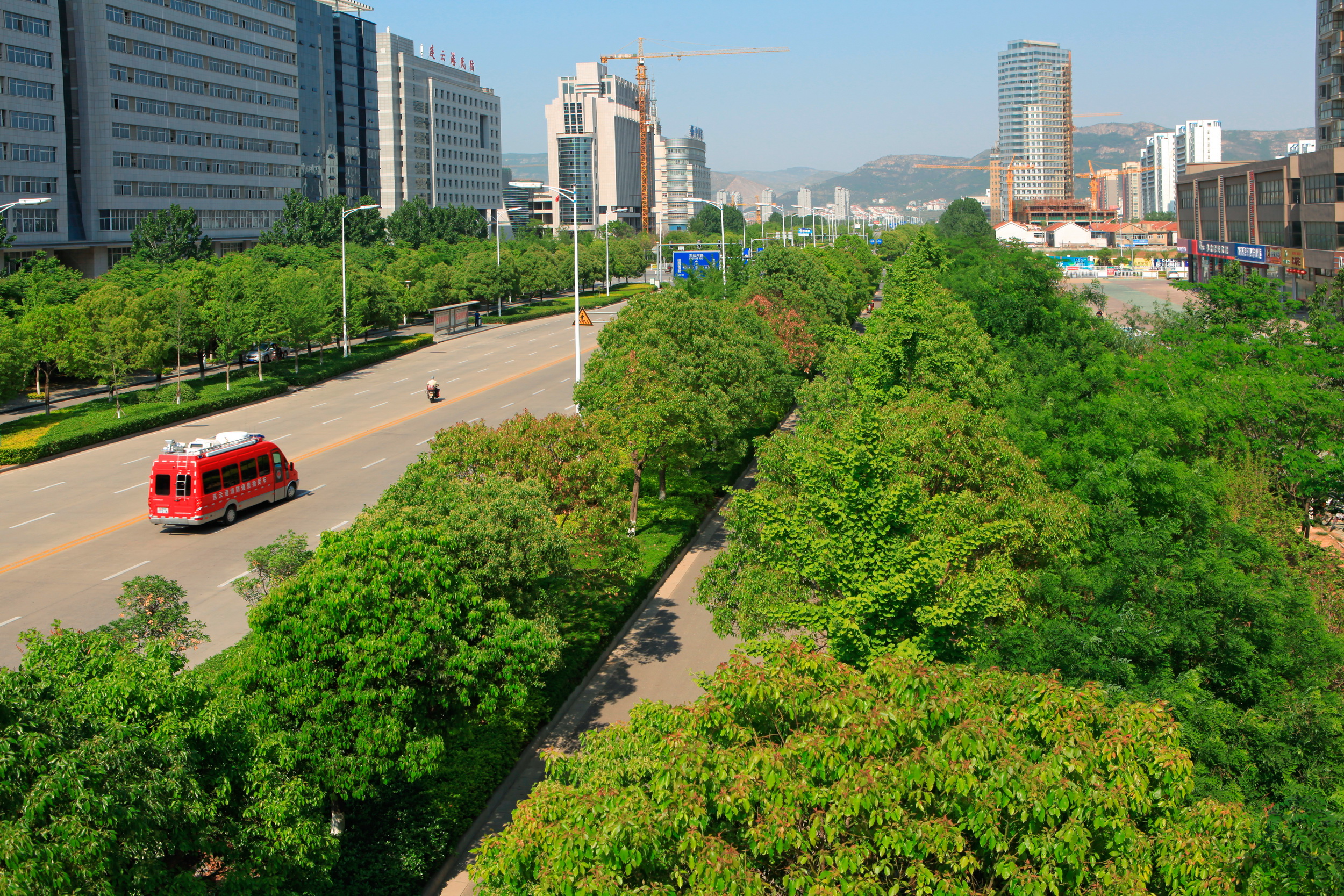 PDF(1466 KB)
PDF(1466 KB)


Construction of a comprehensive assessment system for road greening tree species in coastal cities
WANG Zhen, GAO Yajun, YAN Fanfeng, WANG Xiaowei, LI Huaqing, JIANG Lei
Journal of Nanjing Forestry University (Natural Sciences Edition) ›› 2021, Vol. 45 ›› Issue (2) : 187-196.
 PDF(1466 KB)
PDF(1466 KB)
 PDF(1466 KB)
PDF(1466 KB)
Construction of a comprehensive assessment system for road greening tree species in coastal cities
 ,
,
【Objective】Comprehensive assessment of tree species can provide scientific references for road greening and gallery ecosystem construction in coastal cities with complex natural conditions.【Method】Lianyungang City was chosen as the case study. Fifty-five commonly seen tree species were scientifically monitored, surveyed and analyzed. The analytic hierarchy process (AHP) was adopted, and five Level-Ⅰ indexes were designed, including the ecological indexes, landscape indexes, adaptability indexes, economic indexes and negative consequences. On this basis, 30 Level-Ⅱ indexes were put forward and quantitatively marked. The weights and assignments of each assessment index were identified. Subsequently, a comprehensive assessment system for road greening tree species in coastal cities was developed. The assessment system is used to clarify the strengths and weaknesses of tree species in practical situations. The tree species were graded according to final scores.【Result】In terms of ecological indexes, the weight of overshadow and cooling performance was the highest (0.513 7). In terms of landscape indexes, the weight of leaf color, leaf amount and flower were the highest (0.181 8). In terms of adaptability indexes, the weight of resistance against wind, plant diseases, insect diseases, and salt and alkali were the highest (0.174 0). In terms of economic indexes, the weights of the seedling price and maintenance intensity at the index layer were both 0.4. In terms of negative consequences, the weight of fluffy catkin and pollen was the highest (0.6). At the criterion layer, the weight of ecological indexes, landscape indexes and adaptability was 0.3, accounting for 90% of the total; the weight of economic indexes and negative consequence was only 0.05. The assessment results suggest tree species are tall and large, with dense branches and leaves, and which are resistant to adverse conditions, scored higher.【Conclusion】Improving the ecological environment is the main greening goal of coastal cities. In choosing tree species, the authorities should increase the percentage of local tree species and promote them as backbone tree species for future road greening. At the same time, the economic performance of maintenance and management, and the negative consequences of fluffy catkin and pollen should be taken into consideration.

coastal city / road greening / Analytic Hierarchy Process(AHP) / comprehensive assessment of trees
| [1] |
徐彩瑶, 濮励杰, 朱明. 沿海滩涂围垦对生态环境的影响研究进展[J]. 生态学报, 2018,38(3):1148-1162.
|
| [2] |
孟紫琪, 龙凌波, 佘倩楠, 等. 基于土地利用/覆盖变化的中国大陆沿海地区生态状况评价[J]. 应用生态学报, 2018,29(10):3337-3346.
|
| [3] |
许凤娇, 吕晓. 基于土地利用变化的江苏沿海地区生态风险格局[J]. 生态学报, 2018,38(20):7312-7325.
|
| [4] |
高宾, 李小玉, 李志刚, 等. 基于景观格局的锦州湾沿海经济开发区生态风险分析[J]. 生态学报, 2011,31(12):3441-3450.
|
| [5] |
|
| [6] |
毛志刚, 谷孝鸿, 刘金娥, 等. 盐城海滨盐沼湿地及围垦农田的土壤质量演变[J]. 应用生态学报, 2010,21(8):1986-1992.
|
| [7] |
张濛, 濮励杰, 王小涵, 等. 长期耕种对江苏沿海围垦区滨海盐土理化性质和小麦产量的影响[J]. 生态学报, 2016,36(16):5088-5097.
|
| [8] |
牛东玲, 王启基. 盐碱地治理研究进展[J]. 土壤通报, 2002,33(6):449-455.
|
| [9] |
赖小红, 李名扬, 刘聪, 等. 植物物候对重庆主城区热岛效应的响应[J]. 生态学报, 2019,39(19):7025-7034.
|
| [10] |
武小钢, 蔺银鼎. 城市道路隔离带绿化模式对人行道空气质量的影响评价[J]. 环境科学学报, 2015,35(4):984-990.
|
| [11] |
李萍, 王松, 王亚英, 等. 城市道路绿化带 “微峡谷效应” 及其对非机动车道污染物浓度的影响[J]. 生态学报, 2011,31(10):2888-2896.
|
| [12] |
蔡红艳, 杨小唤, 张树文. 植物物候对城市热岛响应的研究进展[J]. 生态学杂志, 2014,33(1):221-228.
|
| [13] |
许格希, 裴顺祥, 郭泉水, 等. 城市热岛效应对气候变暖和植物物候的影响[J]. 世界林业研究, 2011,24(6):12-17.
|
| [14] |
|
| [15] |
马赫, 张天海, 罗宏森, 等. 沿海快速城市化地区能值生态足迹变化分析[J]. 生态学报, 2018,38(18):6465-6472.
|
| [16] |
| [17] |
李庆贱, 陈志强, 时瑞亭, 等. 白榆家系苗期耐盐碱研究[J]. 北京林业大学学报, 2010,32(5):74-81.
|
| [18] |
张华新, 刘正祥, 刘秋芳. 盐胁迫下树种幼苗生长及其耐盐性[J]. 生态学报, 2009,29(5):2263-2271.
|
| [19] |
韩燕燕, 鲁艳, 吕光辉. 植物耐盐的生理机制及基因工程新进展[J]. 生物技术通报, 2007(4):10-14,18.
|
| [20] |
|
| [21] |
唐桂兰, 游良旺, 芦建国. 城市道路绿化对行车视线诱导的植物合理种植间距[J]. 南京林业大学学报(自然科学版), 2017,41(5):180-184.
|
| [22] |
|
| [23] |
|
| [24] |
|
| [25] |
|
| [26] |
|
| [27] |
于金涛, 肖文发, 王鹏程, 等. 防护林健康评价研究进展[J]. 世界林业研究, 2013,26(1):31-36.
|
| [28] |
杨琴军, 苏洪明, 夏欣, 等. 基于植物多样性的武汉市道路绿化研究[J]. 南京林业大学学报(自然科学版), 2007,31(4):98-102.
|
| [29] |
赵瑾, 李文银, 魏国仁, 等. 宝鸡市5种乡土树种抗旱性综合评价和研究[J]. 西北林学院学报, 2019,34(6):74-81.
|
| [30] |
闫晓云, 张秋良, 韩鹏, 等. 呼和浩特市绿化树种综合评价及树种选择[J]. 干旱区资源与环境, 2011,25(3):135-140.
|
| [31] |
丁纯璐, 马健霄, 朱宁. 基于层次分析法的城市绿道综合评价研究[J]. 森林工程, 2020,36(2):81-90.
|
| [32] |
林玮, 白青松, 陈雪梅, 等. 华南主要造林树种碳汇能力评价体系构建及优良碳汇树种筛选[J]. 西南林业大学学报, 2020,40(1):28-37.
|
| [33] |
张锁成, 谷建才, 王秀芳, 等. 基于AHP方法的高速公路中央分隔带绿化植物综合评价[J]. 西北林学院学报, 2012,27(4):100-102,107.
|
| [34] |
国家市场监督管理总局, 国家标准化管理委员会. 森林生态系统服务功能评估规范 GB/T 38582—2020[S]. 北京: 中国标准出版社, 2020.
|
| [35] |
王嘉楠, 赵德先, 刘慧, 等. 不同类型参与者对城市绿地树种的评价与选择[J]. 浙江农林大学学报, 2017,34(6):1120-1127.
|
| [36] |
黄少雄, 卢明明, 陈捷, 等. 层次分析法在粤北高速公路沿线绿化树种选择中的运用[J]. 亚热带植物科学, 2016,45(2):177-182.
|
| [37] |
许秀玉, 肖莉, 王明怀, 等. 沿海抗台风树种评价体系构建与选择[J]. 浙江农林大学学报, 2015,32(4):516-522.
|
| [38] |
林玮, 白青松, 陈雪梅, 等. 华南主要造林树种碳汇能力评价体系构建及优良碳汇树种筛选[J]. 西南林业大学学报, 2020,40(1):28-37.
|
| [39] |
谢春平, 方彦, 刘大伟, 等. 基于层次分析法的江苏宁镇山脉乡土树种评价[J]. 亚热带植物科学, 2019,48(2):161-168.
|
| [40] |
杨静怡, 张政文, 吴峰. 贵阳市主要绿化树种功能评价[J]. 江苏农业科学, 2020,48(3):156-161. DOI: 10.15889/j.issn.1002-1302.2020.03.027.
|
| [41] |
张德顺, 刘鸣. 基于“植物功能性状-生态系统服务”评价框架的园林树种选择方法:以上海为例[J]. 中国园林, 2020,36(2):106-111.
|
/
| 〈 |
|
〉 |